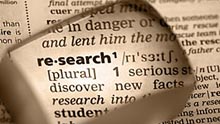
One of the things that has improved noticeably in the media in recent years has been scepticism of studies and reports commissioned by interested parties intended to bolster their case. Crikey has been bagging the use of “independent modelling” for many years and there have always been mainstream journalists like Peter Martin who have been willing to call bullshit on self-serving studies produced by hired consultants. Increasingly, however, the days of lobby groups, companies, NGOs and other interested parties getting uncritical coverage of a made-to-order report showing “the cost of XYZ reaching $50 billion, a new study shows” are coming to an end — with some obvious exceptions, such as journalists running drops from the government.
These “reports” have poisoned public debate in Australia for decades. Economic consulting firms have provided a vehicle for egregious lies to be paraded in public clothed in the garb of evidence and intellectual rigour. An entire industry has sprung up dedicated to churning out seemingly authoritative reports that say whatever the people commissioning them say. The need for journalists to run them uncritically, however, is a key weakness of the process — if the only publicity your report gets is a piece that dissects your report, you look like the rent-seeking shyster you are.
With journalists growing more sceptical, it’s possible to think of eliminating such reports entirely from public debate. How? What about an editorial code of conduct for reporting on such reports? The core issue is that journalists should not knowingly be party to efforts to mislead their readers or viewers. So media outlets would not cover economic modelling, auditing, or other in-house or third-party analyses, unless the coverage included:
- Who commissioned and prepared the report and how much was paid for it;
- A link to the report — putting an end to the tradition of giving a drop to a favoured journalist without making the report available to everyone at the same, which is intended to ensure at least a day of favourable coverage (although sometimes the report is never made available to those of us who have tried to follow up reports);
- Criticisms that have been made of previous reports on the same subject by the same firm — so we don’t have a repeat of the Econtech situation, where a discredited report kept being trotted out by the Coalition; and
- What other reports the same firm has done in the same area, which might demonstrate the, shall we say, “flexibility” of the firm involved to tailor its work for clients.
If the bodies commissioning such reports, and the consultants themselves, aren’t willing to provide details about the documents they want to influence public debate with, that’s fine. They can issue a media release or tweet about the report. But they don’t get the amplification and legitimisation that comes from mainstream media coverage.








Seems far too obvious Bernard, can’t see that idea taking off under the current regime – egregious dishonesty is their main stock in trade.
And as Richard Denniss says, the underlying assumptions for the model should be published. They are often regarded as commercial-in-confidence which is rubbish. This would then stop the reporting of the assumptions as outcomes.
Good idea BK. I have noticed they seem to be getting much less coverage for dubious reports of late, perhaps as a result of Peter Martin and the few numerically inclined journalists who know bullshit when they sniff it.
As an analyst I’ve been calling bull on these for 20 years minimum. My favourite is the public holiday that falls on a Tuesday or a Thursday, followed by a report that it will then cost the Australian economy $20b due to absenteeism, usually published by the Business Council or the like. Laughable, and the assumptions underlying could easily be skewed by me to show how they have added to the Australian economy.
Let bollocks be bollocks.